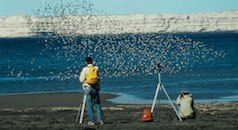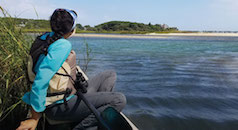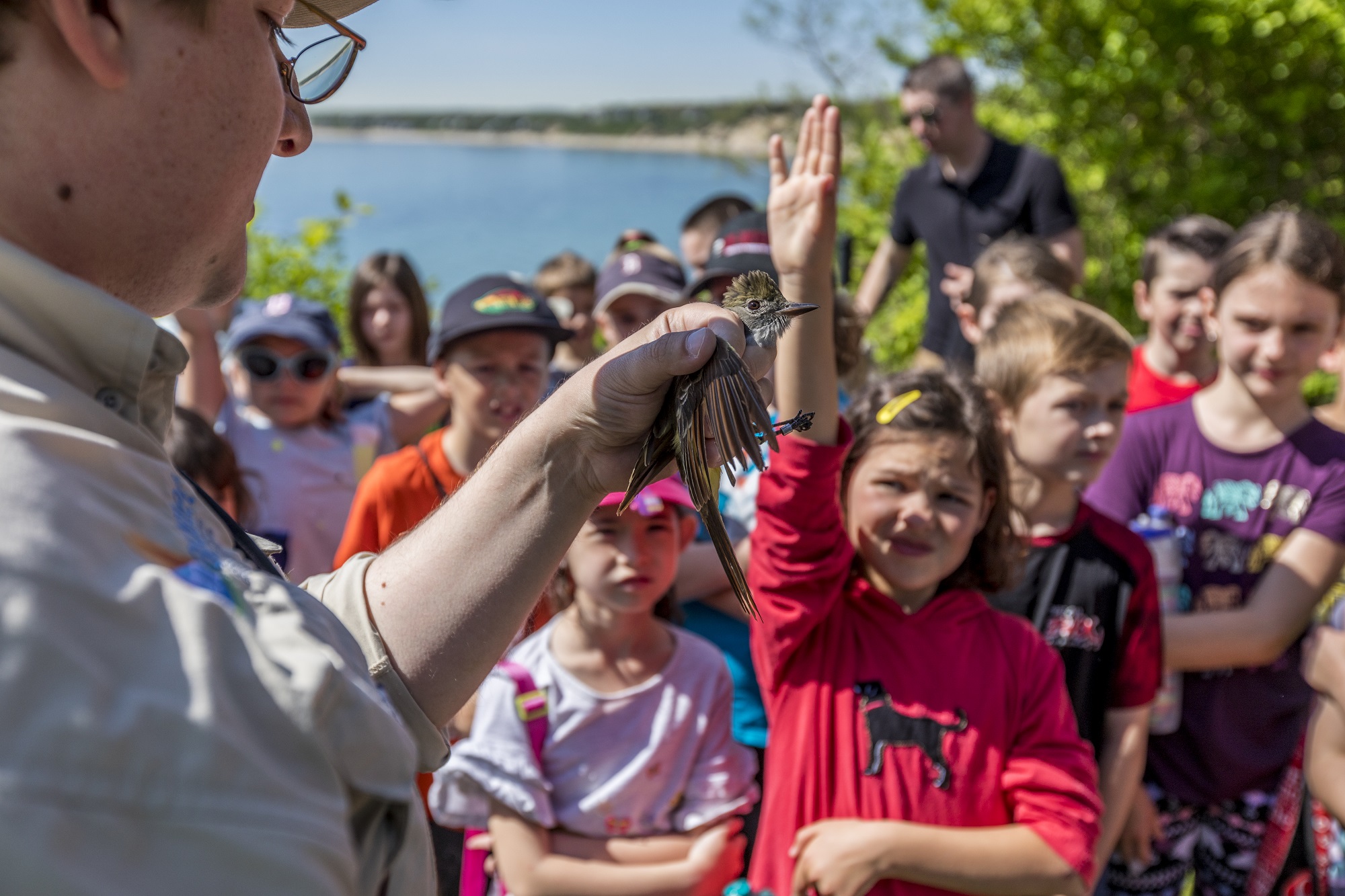Search Results

Study Shows Maine’s Wildlife Threatened by Climate Change
More than a third of Maine’s most vulnerable wildlife species are threatened by climate change, according to a recent study. The report, Climate Change and Biodiversity in Maine, identified 168 vulnerable species that could experience large range shifts and population declines in Maine by 2100 as a result of climate change. Iconic Maine species, such as the common loon and moose, were some of the species found to be at risk. “Maine will experience more warming than most states and this may pose a huge threat to our wildlife,” said lead author Andy Whitman, of the Manomet Center for Conservation Sciences. “We identified Maine’s wildlife and habitats most vulnerable to climate change. This is the first step for moving forward on...
Efforts Help Oystercatchers Make a Comeback
This article was originally published in the Wilmington Star News on February 17, 2014, and was written by Kate Elizabeth Queram. View the original article here. The number of American oystercatchers in North Carolina increased by more than 30 percent in the past five years, a jump researchers say is a direct result of a long-term conservation partnership between dozens of groups along the Eastern Seaboard. "This is highly unusual in the shorebird world," said Shiloh Schulte, American oystercatcher recovery coordinator at the Manomet Center for Conservation Sciences in Plymouth, Mass. "Shorebirds are in really dire straits at this point, so seeing one that we're able to turn around is pretty exciting." American oystercatchers are orange-billed, black-and-white birds that make...
Oystercatchers Vulnerable in NJ Despite Rise in Population
This article was originally published on NorthJersey.com on February 10, 2014, and was written by James O'Neill. View the original article here. In the past five years, more than 35 non-profits and government agencies from Texas to New England have collaborated to stabilize the population of the American oystercatcher, a shore bird with a distinctive flat orange bill it deftly wields to pry open shellfish. The birds primarily nest on the open, sandy beaches of barrier islands, which makes them vulnerable to human disturbance, attacks from predators and sea level rise. To protect the species, small sections of beach from Sandy Hook to Cape May have been roped off and posted with signs from April through August. Similar efforts are...
Oystercatchers See Strength in Numbers
This article was originally published in the Martha's Vineyard Gazette on February 1, 2014. View the original article here. The American Oystercatcher population is recovering following a decline documented a decade ago, a Cape Cod science center said. A comprehensive aerial survey of the oystercatcher population done last year from Long Island to the Mexico border found the population had increased steadily since 2009. A coalition of 35 conservation groups formed five years ago to protect habitat and aid recovery. Ten years ago the harlequin-colored shorebirds were in a decline. Habitat loss and human encroachment were blamed. A survey that year showed there were about 10,900 oystercatchers and that the population was dwindling. In 2009 a coalition of 35 groups...
Downeast Fisheries Partnership
Fishing in Downeast Maine has changed dramatically since populations of groundfish like cod, haddock and flounder collapsed twenty years ago. Manomet has partnered with the Downeast Salmon Federation and the Maine Center for Coastal Fisheries to form the Downeast Fisheries Partnership (DFP), a large-scale effort to tackle the complex problem of restoring the regional fisheries. The partnership aims to recreate fish habitat, diversify the fishing economy by better controlling when and where fishing occurs, create stewardship and management programs in which fishermen are active partners, develop new markets for fisheries products and document the outcomes and lessons learned so that the methods can be expanded to other regions. The DFP is using a collaborative, expansive approach to restore...
American Oystercatcher Populations Rebound with Conservation Effort
Five years after conservation groups launched a large-scale, coordinated effort to recover the imperiled American Oystercatcher, the species' population has stabilized and begun to increase, according to an aerial survey conducted in 2013. Ten years ago, the charismatic, orange-billed shorebird was threatened by habitat loss and human encroachment. A comprehensive survey that year showed about 10,900 total birds and a declining population. The numbers kept dropping until 2009, when a coalition of 35 groups from Canada to Texas mobilized to protect the species. A survey completed in 2013 found about 11,200 birds. "This kind of conservation success is extraordinary, especially in the shorebird world," said Shiloh Schulte, a scientist at the Manomet Center and coordinator of the American Oystercatcher Working...
American oystercatchers are on the way back
This article was originally published in the Delaware News Journal on January 24, 2014 and was written by Molly Murray. View the original article here. Populations of American oystercatcher shorebirds appear to have stabilized and started to increase on the Atlantic and Gulf coasts after a coordinated, five-year restoration effort by conservation groups and state agencies. In Delaware, the numbers appear to be stable with about 15 nesting pairs over the last four years, said Matthew Bailey, a state wildlife biologist. The downside: Delaware has seen limited production of young birds from those nesting pairs, he said. For instance, just two young birds survived the nesting season to fledge last year. In 2010, 10 young birds fledged, he said. But...
Interview with Ethel Wilkerson: Protecting Water Quality and Fighting Climate Change
Ethel Wilkerson is a program manager in Manomet’s Sustainable Economies Program. She leads the Clear Water Carbon Fund, which plants trees on deforested riverbanks to protect water quality, create wildlife habitat and remove carbon from the atmosphere. On January 28, Wilkerson will speak at Manomet headquarters about protecting water quality and fighting climate change. The event is free and open to the public. Click here to register. Why did Manomet launch the Clear Water Carbon Fund? Wilkerson: I came to Manomet 11 years ago to lead a field research project on the importance of forests for clean water and wildlife habitat. The study focused on the how trees growing on stream banks helped maintain and protect...
Over 1,000 People Flock to Chiloé Island Migratory Bird Festival
More than 1,000 people attended the third annual Migratory Bird Festival on Chiloé Island, Chile, on November 23rd and 24th. The festival was held in the town of Putemún to celebrate the migratory shorebirds that winter in the eastern wetlands of Chiloé, a vital site for many species, and was organized by Centro de Estudios y Conservación del Patrimonio Natural (CECPAN). Festival attendees enjoyed shorebird-themed theater, dance and music, as well as local food tastings, handicrafts, scientific and educational talks and guided birding walks in the wetlands of Putemún. Diego Luna Quevedo, Southern Cone Coordinator for Manomet’s Shorebird Recovery Project, traveled to Chiloé to attend the festival. "Chiloé’s Migratory Bird Festival has become an iconic local...
Want to Make a Measurable Difference?
Manomet’s scientific, collaborative approach is why so many friends like you believe in Manomet — and why many of you have invested generously in our work. We are quickly approaching the final days of 2013. Have you sent in your year-end gift yet? If you haven’t, please consider doing so now. And remember, your investment doesn’t stop with Manomet. It starts with Manomet. And then it keeps going and going and going. Your gift allows our program leaders to create innovative, scientific solutions to conserve natural resources. Then we bring in powerful partners like the U.S. Fish and Wildlife Service, the Small Business Administration, and Hannaford Supermarkets. With partners, we put science to use and together we...



